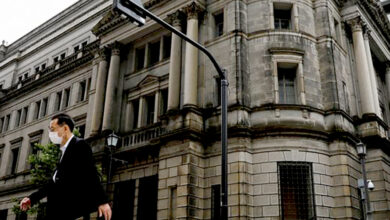Dollar Holds Below 20-Year High; Bostic Comments Focused

The US dollar steadied in early European trade Tuesday, after slipping from a two-decade high as traders reassessed the prospect of rapid Federal Reserve rate hikes.
The Dollar Index, which monitors the dollar against a basket of six other currencies, was up to 103.725 at 3:05 AM ET (0705 GMT), having gone as high as 104.19 overnight, a new 20-year high.
On Monday, Atlanta Federal Reserve President Raphael Bostic weighed on the dollar by downplaying speculation of the US central bank raising interest rates by more than half a percentage point at its next meeting in June.
“Given what I expect to happen in the economy over the next three to four months,” Bostic told Reuters in an interview.
The Federal Reserve of the United States announced a 50 basis point boost last week, its highest since 2000, and expectations are increasing that the central bank would raise even more vigorously to battle inflation at levels not seen in 40 years.
U.S. Treasury yields have gradually risen on anticipation that the Fed will raise interest rates significantly, but Bostic’s comments caused the yield on benchmark 10-year U.S. government notes to fall back Tuesday, albeit it still stands over 3%.
USD/JPY was 0.2% higher at 130.44, although it was still lower than the new 20-year high of 131.34 set yesterday. EUR/USD increased by 0.1 percent to 1.0563, while GBP/USD increased by 0.2% to 1.2354.
There will be many more lectures by Fed policymakers this week, and their views may influence the market, but the focus will be on the U.S. consumer price inflation data, which is due Wednesday and is likely to reveal that price gains moderated slightly in April.
“Lower fuel and used vehicle costs should push headline and core CPI down from their all-time highs.” “Any larger-than-expected decreases may signal that the Fed does not need to be as aggressive in its hike plans,” ING analysts wrote in a report.
“However, some easing of the Fed’s tightening profile is wishful thinking at this time, and it appears risky to hedge against additional dollar strength.”
In other news, the USD/CNY slid 0.3 percent to 6.7084, barely below an 18-month high, as Shanghai reinforced its lockdown measures in response to China’s zero-COVID policy.
AUD/USD increased 0.2 percent to 0.6967 after falling as low as 0.6920 overnight, its lowest since July 2020, while USD/CAD rose 0.1 percent to 1.3014 after falling as low as $1.3037 overnight, its lowest since November 2020.





